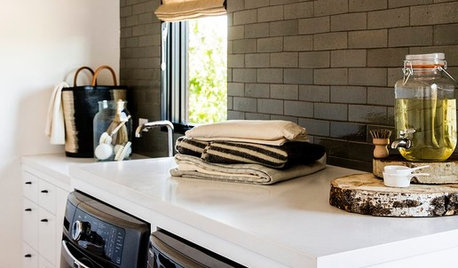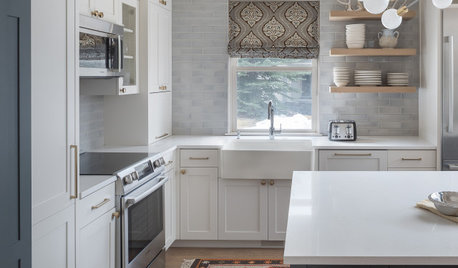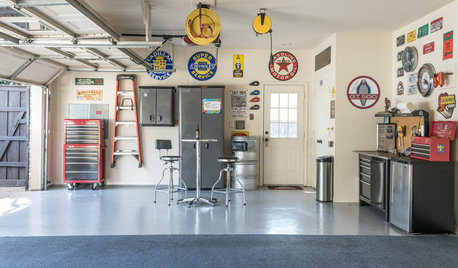Zone-Pushing - planned or unplanned
lilmonicker
18 years ago
Related Stories

KITCHEN WORKBOOKNew Ways to Plan Your Kitchen’s Work Zones
The classic work triangle of range, fridge and sink is the best layout for kitchens, right? Not necessarily
Full Story
DECORATING GUIDES10 Ways to Tiptoe Out of Your Decorating Comfort Zone
Ease into waking up your space with small doses of decorating daring that express who you are right now
Full Story
KIDS’ SPACES5 Ideas for a Great Home Learning Zone
Get your child off to a good start this school year with homework areas and strategies that reduce the frenzy
Full Story
HOUSEKEEPINGClean Up Your Cleanup Zones
Make chore time more pleasant by tidying up your laundry room and updating cleaning tools
Full Story
ARCHITECTUREOpen Plan Not Your Thing? Try ‘Broken Plan’
This modern spin on open-plan living offers greater privacy while retaining a sense of flow
Full Story
GARDENING GUIDESWhat Are Your Spring Gardening Plans?
Tearing out the lawn? Planting edibles? Starting from scratch? Tell us what you plan to change in your garden this year
Full Story
DECORATING GUIDES9 Ways to Define Spaces in an Open Floor Plan
Look to groupings, color, angles and more to keep your open plan from feeling unstructured
Full Story
KITCHEN DESIGNBright Modern Kitchen With Smooth Lines and a Relaxed Vibe
A peninsula separates zones in this open-plan family kitchen and dining area with a streamlined design
Full Story
ORGANIZING7-Day Plan: Get a Spotless, Beautifully Organized Kitchen
Our weeklong plan will help you get your kitchen spick-and-span from top to bottom
Full Story
HOUSEKEEPING7-Day Plan: Get a Spotless, Beautifully Organized Garage
Stop fearing that dirty dumping ground and start using it as the streamlined garage you’ve been wanting
Full StoryMore Discussions






abgardeneer
Pudge 2b
Related Professionals
Accokeek Landscape Architects & Landscape Designers · Bethlehem Landscape Contractors · Edmond Landscape Contractors · Aberdeen Landscape Contractors · Cockeysville Landscape Contractors · Cordele Landscape Contractors · Dixon Landscape Contractors · East Hanover Landscape Contractors · La Verne Landscape Contractors · North Highlands Landscape Contractors · West Orange Landscape Contractors · Spokane Window Contractors · Glen Burnie Window Contractors · Hammond Window Contractors · Tamalpais-Homestead Valley Window Contractorsabgardeneer
dentaybow
ian_bc_north
glen3a
Pudge 2b
glen_cdn_prairies_z3
abgardeneer
sharons2
abgardeneer
dentaybow
glen_cdn_prairies_z3
dentaybow
glen_cdn_prairies_z3
north53 Z2b MB
mytime
dentaybow
sharons2
glen_cdn_prairies_z3
leftwood
CrazyDaisy_68
north53 Z2b MB
marciaz3 Tropical 3 Northwestern Ontario
glen_cdn_prairies_z3
cailinriley
marciaz3 Tropical 3 Northwestern Ontario
dentaybow
sharons2
leftwood
glen_cdn_prairies_z3
dentaybow
glen_cdn_prairies_z3
leftwood
The_Passionate_Thumb
GardenChicken
leftwood
abgardeneer
leftwood
The_Passionate_Thumb
The_Passionate_Thumb
leftwood
sharons2
abgardeneer
Pudge 2b
sharons2
north53 Z2b MB
luckygal
sharons2
arcticiris